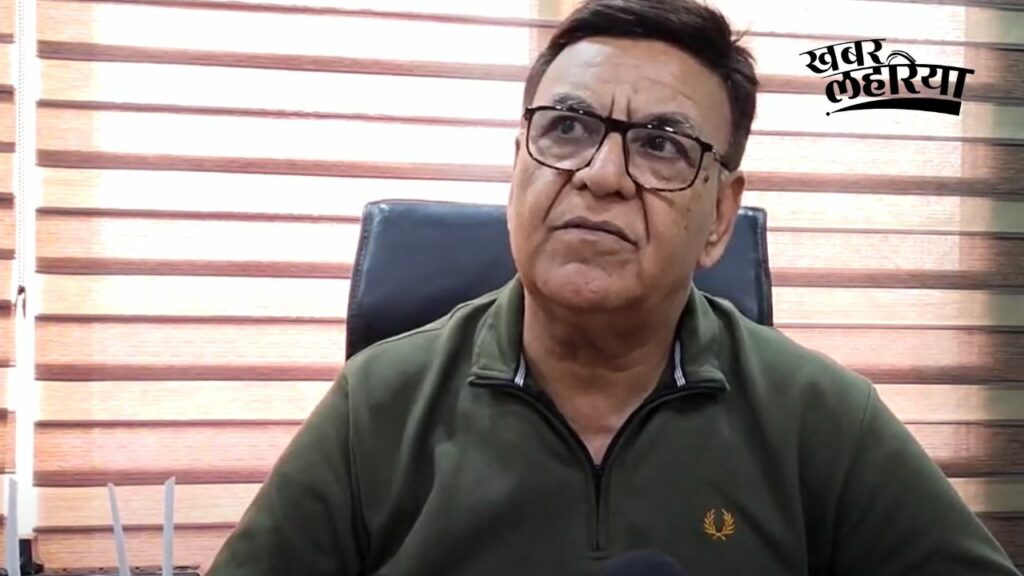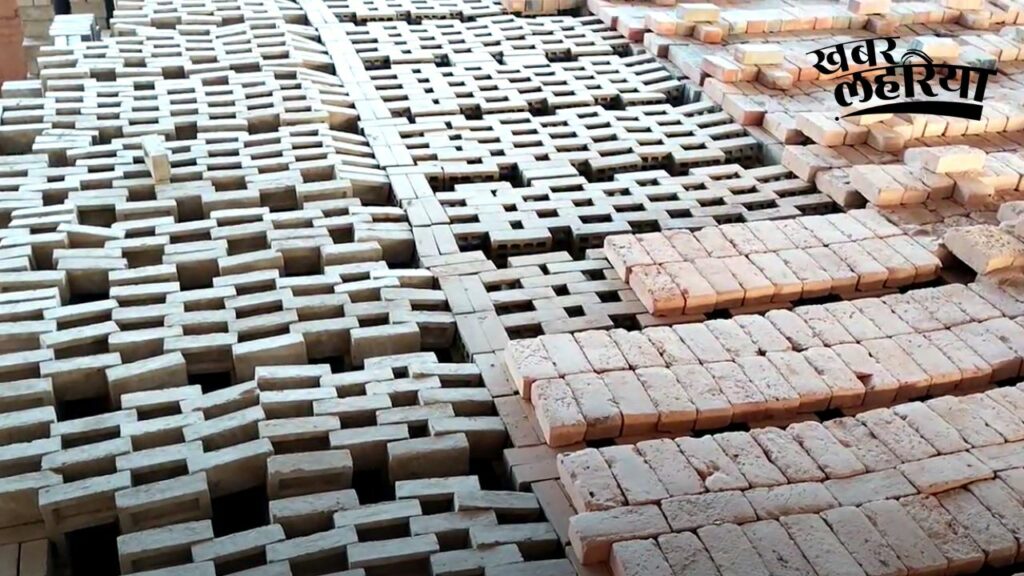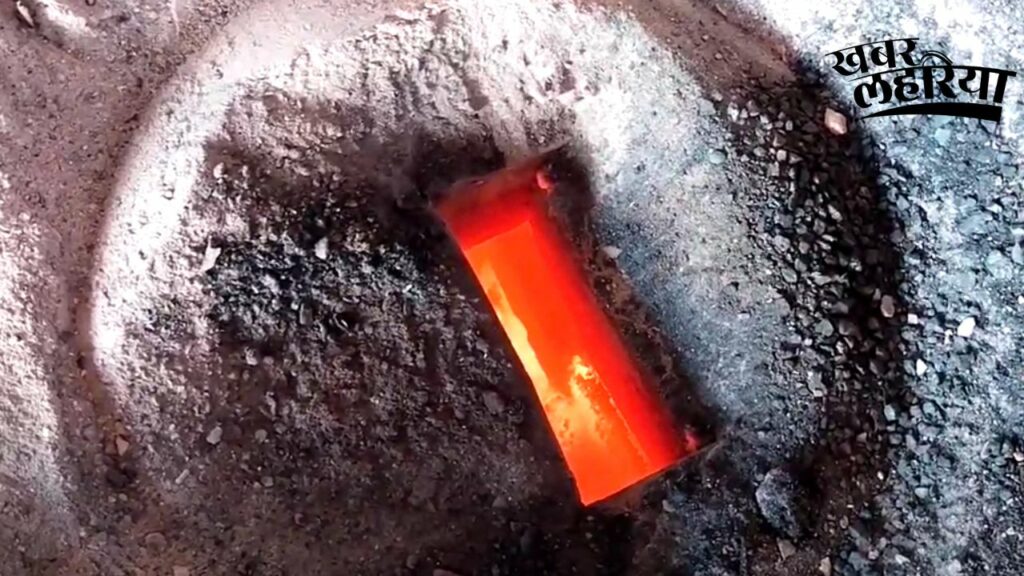For Om Prakash Badlani, hailing from Harahua in Varanasi, brick kilns have always been a part of his life. As the head of Prayag Kilns limited, a family-run business, he expanded operations and roped in his son to start brick exports. His greatest achievement is adopting the most significant change in producing these bricks using zig-zag technology.
“Zig-zag technology against a fixed chimney (FCBTK) technology has directly benefitted workers, their families, our output, and the environment,” he says.
Badlani is one of a sizable group of brick-kiln owners who are slowly embracing zig-zag brick kiln technology. It is amassing popularity in brick kilns worldwide, including the neighboring countries of Pakistan, Bangladesh, and Nepal. While businesses see it as a cost-efficient and work-reducing measure, legal bodies also see it as a crucial step to fight brick-kiln pollution.

Om Prakash Badlani is one of a sizable group of brick-kiln owners who are slowly embracing zig-zag brick kiln technology
The Center and Supreme Court have echoed environment and worker-friendly observations on different occasions. As a part of the Environment (Protection) Amendment Rules 2022, only three technologies, including zig-zag technology, can be used to establish new brick kilns. Further, the Supreme court mandated using zig-zag technology in brick kilns in Delhi-NCR. In fact, states like Haryana have come up with directives urging brick kilns to shift to emission-reducing technology.
In India, traditional brick kilns account for 70% of brick production. Also called Fixed Chimney Bull’s Trench Kiln (FCBTK), they define India’s brick kiln industry. They also define India’s current brick kiln pollution problem as the source of greenhouse gas emissions and river pollution.
The traditional brick kilns can make a lot of bricks at once, which helps build houses and other things. However, it can also create a lot of smoke and air pollution, which is unsuitable for the environment or people’s health. So, people are constantly working to find ways to make brick-making safer, more efficient and less harmful.
Zig-zag technology makes the bricks’ production process easier and more environmentally friendly.
Instead of a long, narrow trench, the zig-zag method uses a special oven that looks like a series of steps.
Like with FCBTK, people gather clay from the ground and shape it into bricks. Then, they put the bricks inside the zig-zag oven. The oven is built with steps or zig-zag patterns where the bricks are placed.
The oven’s unique design helps make the most of the heat from the fire so that people can use it efficiently and with less waste.
This technology is essential because it can make bricks more efficiently, using less wood or fuel to power the oven. This can help to save resources and protect the environment.
“After adopting the zig-zag technology, we have seen a 75% to 80% reduction in black smoke,” quips Badlani. “In fact, I applied for a patent for this technology in 2014 and obtained it,” he adds.
Also Read : Jal Jeevan Mission in UP : Few Taps In Banda, Taps But Not Enough Water in Baghpat
Badlani’s Zig-Zag Journey
In an interaction with Australia’s Mr. Halva in 1998, Badlani was fascinated by the potential of the zig-zag technology. He aspired to convert his brick kilns to adapt to this technology. But there was one roadblock: expenses.
“Mr. Halva asked for Rs. 5 crores just to give the technology. It was totally out of our budget. We had seen how it works and were impressed by it, but we did not have much to spend on it,” recalls Badlani.
In 2000, Badlani started using the technology by investing in a low-cost zig-zag draft-induced fan. After four years, he switched to a zig-zag natural draft technology. Piece by piece, he kept upgrading the scope of technology in his business every two to three years.
By 2008, all of his brick kilns operated on zig-zag technology. By 2012, they started giving this tech to more brick kilns. Badlani claims that 90% of all the Varanasi Brick kilns have now transited to zig zag technology. He also goes on to add, “Aware and conscious brick kiln owners have adopted it.”
For demonstration purposes, Prayag Limited distributed this technology to one to two brick kilns in almost every district of UP. The company also distributed this technology to about 20 to 30 brick kilns each in Bihar, West Bengal, Odisha, Tripura, Rajasthan, Gujarat, and Maharashtra.
Brick kilns found usefulness in this technology and started developing it themselves. And in 2014, Badlani got it patented.
An all-rounder, useful investment
Badlani, as a brick kiln business owner, sees umpteen benefits. For himself, he saves about 30% of fuel costs with zig-zag technology.
Coal consumption has decreased with zig-zag technology, and kiln owners can now use a mix of coal and agricultural waste as fuel. In fact, at many kilns, because of the lower fuel consumption, they have recovered the cost of transitioning to zig-zag technology within two or three seasons. These cost savings are a significant advantage for business owners like Badlani and highlight the economic benefits of investing in newer, more efficient technology. Technology has also increased business output.
“In normal fixed chimney kilns, 50% to 60% of bricks produced fall under class one. The remaining bricks are in lower classes which are not easy to sell. However, with zig-zag technology, we can produce 80% to 85% of bricks under class one, which brings us direct monetary benefits,” Badlani explains.
“There is also a 75% to 80% reduction in black smoke, directly benefitting the environment and workers,” he adds.
A study on the emissions from chimney and zig-zag kilns showed that the zigzag kilns performed better in emissions. The average PM (Particulate Matter) concentrations in the emissions from all types of zig-zag kilns were less than 250 mg/Nm3, while the same from all types of FCBTKs exceeded the limit. Carbon monoxide emissions from FCBTKs using agricultural waste as fuel were also very high.
A Climate and Clean Air Coalition (CCAC) study found that using zig-zag technology in brick kilns in Pakistan reduced black carbon emissions by 60%, significantly improving air quality and public health.
The kilns can also have a roof now, contrary to previous setups, which protects workers from the sun and heat.
Efficiency at work has also improved, according to Badlani. “While earlier workers used their own estimations at work, now they have been trained to be technologically sound. Trained workers measure the kiln’s temperature, and the manager notes the temperature of the roof, insides, and walls of the kiln,” he says.
Badlani takes quite some pride in explaining the training process for workers. “We properly trained all our staff and even had a school-like setup. We also trained some people to train workers on other sites,” he says.
A better work model for brick-kiln workers
For labor-intensive work, zig-zag technology eases the risk of burden and overwork.
Kamlesh Kumar Yadav, a kiln supervisor in ranking, takes care of laborers in 17 brick kilns in Uttar Pradesh, received adequate training in his job. He says, “I got trained by the owners I worked under. Earlier, working in kilns was difficult in terms of bodywork. Now, there is an increase in money with less effort.”
A brick kiln owner in Mirzapur, Uttar Pradesh, who has also adopted zig-zag technology in brick kilns, echoes Badlani’s statement about zig-zag technology reducing the environmental pollution. He adds, “We buy agricultural waste from the farmers for the brick-baking process. This adds to their income as well.”
The brick kiln owner also talks about having a fan in the kiln that runs 24×7 preventing the release of black toxic air from the chimney.
Badlani’s brick kiln is not your average establishment. They have invested in providing the basic minimum for workers— good accommodation. Although it may not be considered an ideal accommodation, it surpasses the standards set by other kilns in the industry.
This is a testament to the fact that the shift to newer technology has enabled the owner to invest in improving the workers’ lives. However, Badlani is only one among many kilns and does not represent the majority in the industry.
Local challenges
For most of their work, Badlani’s business now uses machines. They also provide battery/diesel carts for loading and unloading. While zig-zag technology seems efficient and beneficial for business, workers need more training and help. They also need job security as kilns evolve more towards being technologically adept. When we asked a worker, Bhima, if he saw any changes post the adaptation of the kiln to this technology, a bystander worker said, “we do not know much.”
Meanwhile, Bhima just smiles at the camera.
This story is part of a media series under Buniyaad, a movement towards a foundational change for a just transition in the brick kln sector, where we will bring social, economic and environmental stories related to equitable change in the brick kiln industry of Uttar Pradesh.
The main objective of this campaign is to work with brick kiln owners, workers, organizations, technical experts and government policy makers to find clean technology for the industry, which can reduce environmental pollution and center and ensure societal welfare benefits for individuals and communities associated with the industry. The Climate Agenda, 100% Uttar Pradesh Network and Chambal Media are a part of this campaign.
This article is written by Nimisha Agarwal.
Also Read : The Kadar Community Charts An Inspirational Journey Of Resilience As They Take Back Their Forests
‘यदि आप हमको सपोर्ट करना चाहते है तो हमारी ग्रामीण नारीवादी स्वतंत्र पत्रकारिता का समर्थन करें और हमारे प्रोडक्ट KL हटके का सब्सक्रिप्शन लें’





